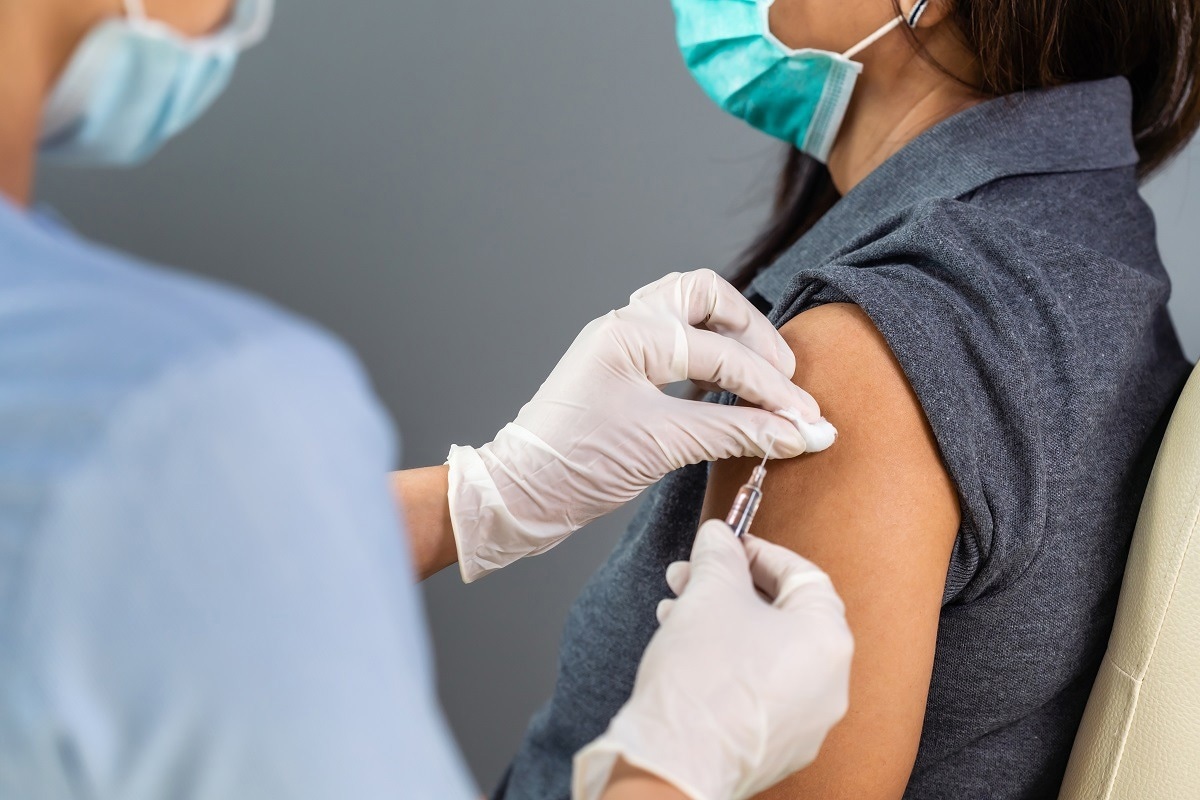What is the efficacy of the second, third, and fourth dose of the COVID-19 mRNA vaccine?

In a recent article posted in the Morbidity and Mortality Weekly Report, investigators examined the effectiveness of two, three, and four severe acute respiratory syndrome coronavirus 2 (SARS-CoV-2) vaccine doses during the Omicron prevalent phases. They explored the SARS-CoV-2 messenger ribonucleic acid (mRNA) vaccine's efficacy.

Background
In November 2021, the SARS-CoV-2 B.1.1.529 (Omicron) variant was initially discovered in the United States (US), with the BA.1 subvariant (including BA.1.1) being responsible for the highest uptick in SARS-CoV-2 infections to date. At the end of April 2022, Omicron BA.2.12.1 and BA.2 subvariants emerged and accounted for most Coronavirus disease 2019 (COVID-19) cases.
Projections of COVID-19 vaccine effectiveness (VE) might be lowered by newly arising SARS-CoV-2 variants or subvariants that escape vaccine-triggered immunity, protection from prior SARS-CoV-2 infection among non-vaccinated people, or elevating gap following vaccination. The VE of a fourth dose of the COVID-19 vaccine given to individuals aged 50 or older and the VE of SARS-CoV-2 vaccines during the Omicron BA.2.12.2/BA.2 variant predominant era are both poorly understood.
About the study
The VISION network analyzed 214,487 urgent care/emergency department (UC/ED) visits and 58,782 hospital admissions associated with a COVID-19–like disease diagnosis in 10 US states from 18 December 2021 to 10 June 2022 to determine the VE of two, three, and four doses of SARS-CoV-2 mRNA vaccines. The researchers compared the VE of COVID-19 mRNA-1273 (Moderna) and BNT162b2 (Pfizer-BioNTech) vaccines to that of no vaccination in immunocompetent subjects. The study period coincided with the Omicron BA.1 and BA.2/BA.2.12.1 prevalent periods in the US.
Hospitalizations and UC/ED visits among people with COVID-19-like illnesses and SARS-CoV-2 molecular tests performed between the preceding two weeks and the next 72 hours constituted eligible medical encounters. When a variant constituted 75% or more of all sequenced specimens at a location, the scientists considered the period to be predominated by that variant.
Ineligible patients were those with 1) a probable immunocompromising state, 2) a medical incident in the washout phase, 3) vaccination with non–mRNA vaccine, 4) receipt of mRNA vaccine dose before advised time-interval, 5) COVID-19 history, and 6) inadequate timeframe following second, third, or fourth dose vaccination.
VE was calculated using a test-negative case-control paradigm, comparing the probability of being vaccinated against non-vaccinated across individuals with SARS-CoV-2-positive or negative test results using multivariable logistic regression. Besides, the logistic regression models were adjusted for the age, study location, local virus circulation, calendar time of the index date, and inverse tendency to get vaccinated. Based on the approval for the fourth vaccine dose on 29 March 2022, VE for four vaccine doses was evaluated only for adults aged 50 years or older throughout the BA.2/BA.2.12.1 timeframe.
Results
The study results showed that COVID-19 VE decreased ≥150 days following the second dose of the vaccine during both the Omicron BA.2/BA.2.12.1 and BA.1 variant periods, emphasizing the necessity for a third dose (the first booster) for eligible adults.
VE against COVID-19-related hospitalization was 92% and 85%, seven to 119 days and ≥120 days after receiving the third dose, respectively, in the BA.1 period, relative to 69% and 52%, respectively, in the BA.2/BA.2.12.1 period. A recent third shot of the vaccination enhanced VE. Nevertheless, VE was slightly dropped ≥120 days after the third dose.
Across adults aged 50 years or older, VE against SARS-CoV-2-linked hospitalization was 55% and 80%, ≥120 days following third dose vaccination and ≥seven days after a fourth vaccine dose during the Omicron BA.2/BA.2.12.1 predominance. The findings indicated that among eligible persons aged 50 years or older, receiving a fourth vaccination dose ≥120 days following the third dose enhanced VE during the BA.2/BA.2.12.1 timeframe, even though the monitoring period following the fourth dose was limited. These observations emphasize the significance of remaining updated with COVID-19 vaccination, consisting of advised booster vaccine doses.
Conclusions
According to the study findings, COVID-19 VE was lower during the SARS-CoV-2 Omicron BA.2.12.2/BA.2 era than during the BA.1 period. In all age categories, a third dose of the vaccination increased protection against mild to severe SARS-CoV-2-associated disease, and a fourth dose increased immunity in eligible people aged 50 years and older.
The authors recommended the need for persistent VE monitoring. This was in the context of emerging SARS-CoV-2 variants and sublineages, like Omicron BA.4/BA.5 sublineages, which became prevalent in the US by late June 2022.
To prevent moderate to severe SARS-CoV-2 infection, the team suggested that immunocompetent individuals receive the advised COVID-19 vaccine booster doses. This includes an initial booster dose for all eligible individuals and a second dose for adults aged 50 years or older at least four months following the first booster dose. They also mentioned that anyone becoming eligible should get booster doses right away.
- Link-Gelles R, Levy ME, Gaglani M, et al. (2022). Effectiveness of 2, 3, and 4 COVID-19 mRNA Vaccine Doses Among Immunocompetent Adults During Periods when SARS-CoV-2 Omicron BA.1 and BA.2/BA.2.12.1 Sublineages Predominated — VISION Network, 10 States, December 2021–June 2022. Morbidity and Mortality Weekly Report (MMWR). doi: http://dx.doi.org/10.15585/mmwr.mm7129e1 https://www.cdc.gov/mmwr/volumes/71/wr/mm7129e1.htm?s_cid=mm7129e1_w
Posted in: Medical Science News | Medical Research News | Disease/Infection News
Tags: Coronavirus, covid-19, Efficacy, Hospital, immunity, Mortality, Omicron, Respiratory, Ribonucleic Acid, SARS, SARS-CoV-2, Severe Acute Respiratory, Severe Acute Respiratory Syndrome, Syndrome, Vaccine, Virus

Written by
Shanet Susan Alex
Shanet Susan Alex, a medical writer, based in Kerala, India, is a Doctor of Pharmacy graduate from Kerala University of Health Sciences. Her academic background is in clinical pharmacy and research, and she is passionate about medical writing. Shanet has published papers in the International Journal of Medical Science and Current Research (IJMSCR), the International Journal of Pharmacy (IJP), and the International Journal of Medical Science and Applied Research (IJMSAR). Apart from work, she enjoys listening to music and watching movies.
Source: Read Full Article